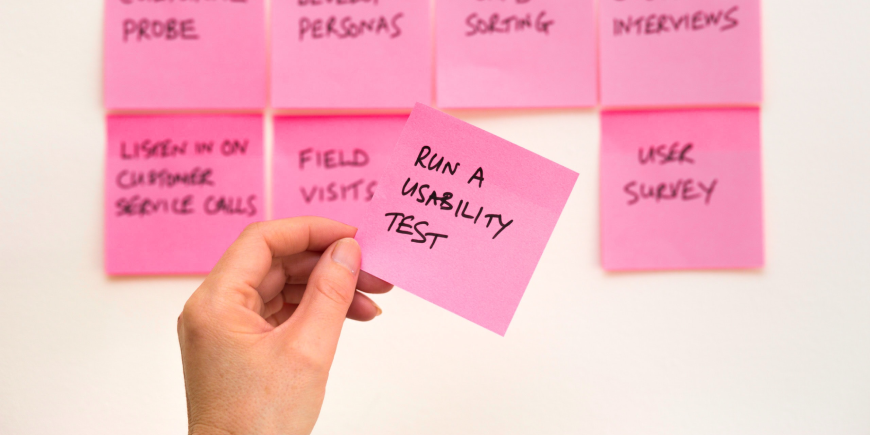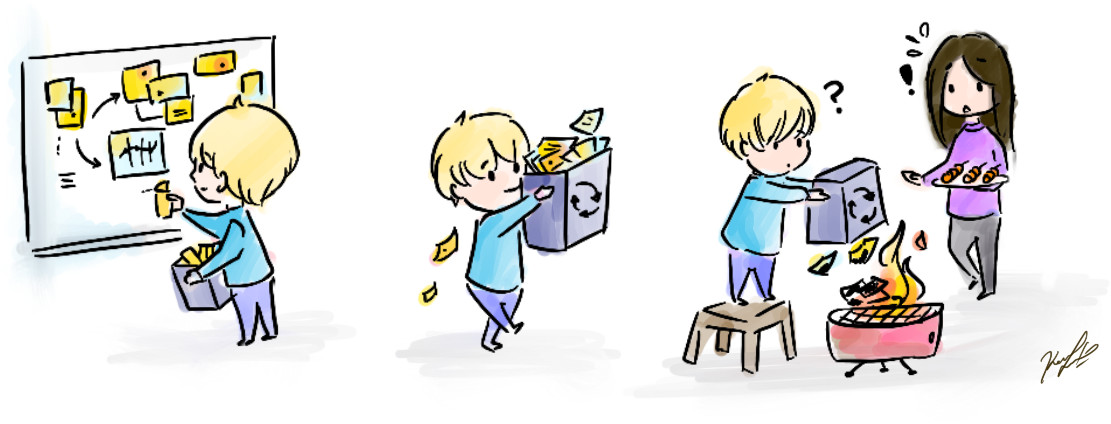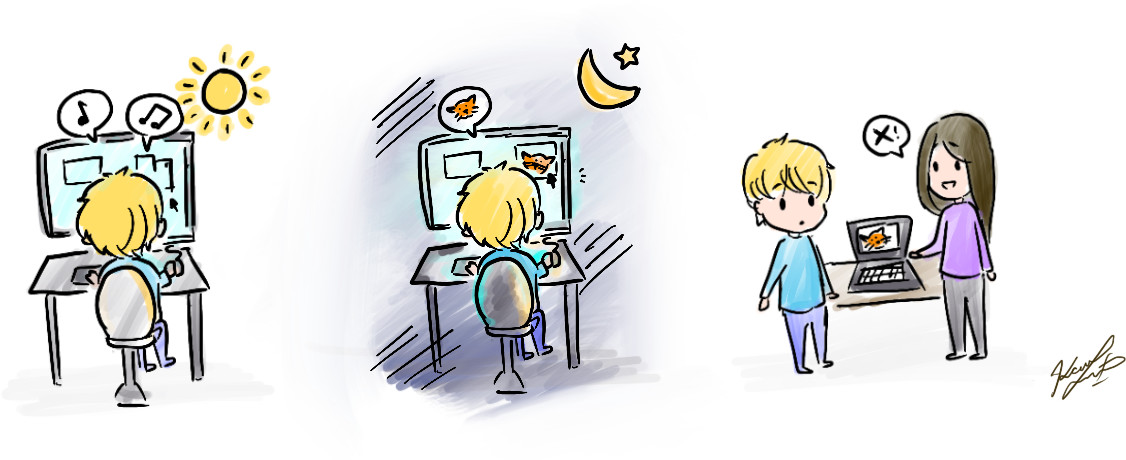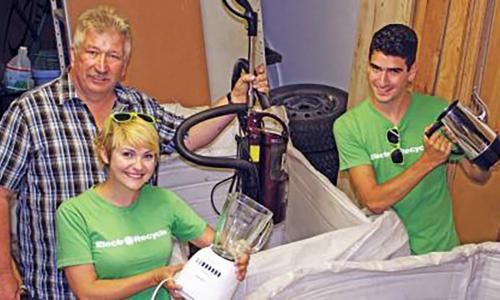
Upon being welcomed into a new Co-op workplace, we as students usually have big goals that we want to achieve, such as getting a stellar project, being recognized for game-changing ideas, or network on LinkedIn with everyone from HQ to the VP-of-Big-Decisions. There is undoubtedly a plethora of advice online that explains how these high-profile tasks lead to greater mastery of the almighty senior design role. However, many overlook the equally important smaller, low-profile work. In fact, it may be an essential part of becoming a truly ‘good designer’ who serves their team and their company.
So, what could these smaller actions be that help you become a star design Co-op student? Let’s look at it from another angle: what things you should not do! Here are four scenarios with fictional character, Des Igner, a new Co-op student at their brand new UX/UI design internship.
Des has just finished a project, and they decide to celebrate by taking the sticky notes, drawings, and journey maps to use as firewood. You never know when you need to show off those s’mores-making skills during the next happy hour!

As designers, we must not just forget about the ideas, analysis, and work that was put into a project. Taking some time after to organize and record what happened, who attended, and what the key insights are can greatly benefit the next project and future designers. This can all be done with simple tools such as Slack, Notion, Google tools like Docs or Sheets, or through a company wiki. Make sure to share these documents with your team for future reference!

Des has been given the task to facilitate a user testing session! They are really excited and know that they’ve had lots of practice doing testing in school. The participant is seated, the test device and camera are ready, and the session starts. Des’ points to the button on the screen and asks, “You like what you see, eh?”
It is a great idea to be friendly and help make your participants comfortable with speaking to you about the design, but it can be very detrimental if you ask leading questions! In brief, these are types of questions that are worded in a way that influences a participant’s answer. Most participants are not likely to be straightforward in offering critical feedback, so when leading questions are asked, it becomes hard for your team to trust that the participant’s answers are not simply the participant trying to be agreeable. Although Des’ situation is an obvious example, there are also subtle ways leading questions can be asked unnoticed. See some more examples below:
|
Evaluating usability |
“Was this feature easy for you to use?” |
→ |
“Can you comment on your experience using this feature?” |
|
Analyzing social dynamics |
“Has your team ever experienced negative communication with X team?” |
→ |
“Describe the communication that your team has with X team.” |
|
Testing visual layouts |
“Did you use the button on the top right to go to the next step first?” |
→ |
“During this step, what elements would you consider taking you to the next step?” |
Des knows that part of the job description is to bring new and innovative designs to the company’s rebranding project. Des decided a presentation had too many words (and was kind of boring), so they decided to print their work on recycled-paper and wrap it in a big gift box that explodes with glitter at their next big meeting. When a stakeholder finally asks, “...so what’s the inspiration behind this choice of colour?”, Des stumbles and does not know what to say.

Clearly, most of us design students would not try to deliver a glitter-filled surprise to our managers, but it may be easy to forget about spending the time to prepare how we communicate our designs. Copywriting, choosing key layouts, and emphasizing the reasons behind our design choices are all skills that need to be practiced and iterated on. A great book recommendation to help with this is “Articulating Design Decisions” by Tom Greever, or checking out Medium articles from UX Collective. Without these skills put to use, it becomes hard for an outside stakeholder - let alone your own team - to align with your design vision.
Des knows that a deadline is coming up. They are a hardworking individual, so they decide to stay after everyone has gone home to work on this amazing feature, they’ve thought of. The finishing touch is to put the last cat gif into the sliding carousel. Good humour makes good impressions in the workplace!

This time, Des almost has it right. While it is important to put passion and quality work into a project, it is also key to check often with stakeholders and managers during your process work to ensure that you’re on the right track. We talk about how frequent user testing is important in UX, but do we also exemplify this in our own work? We should not be afraid to get lots of “check-ins” such as quick 15-minute meetings or sending screenshots with a short description and a few questions to efficiently improve our work and keep it on track. Our stakeholders can have amazing insights you will not know about!
Throughout our co-op experiences, we can keep in mind some key lessons which will work together to raise the quality of our design work. For one, its important to remember to record and keep track of the brainstorming and key thoughts that happen during meetings. We can do this by organizing insights and sticky notes in a quick document or with pictures and storing that online for the team to review. Next, we can improve the quality of our user interviews – and ultimately our team’s work – by ensuring that we gather honest feedback from our target users through not asking leading questions. Third, we must remember that communication is key for us to carry our ideas from concept to reality. When we prepare for meetings and review sessions by taking the time to present our work clearly, we allow for better connection with our manager and stakeholder goals. Lastly, we can think about working not just harder, but also smarter! Through checking-in often with our managers and stakeholders, we can get quick feedback on our work and verify that everyone is aligned on the design.
As smart students, we would probably never do the same outrageous things that Des Igner does, but remembering these small tasks are crucial to achieving the next steps to be a great designer.














